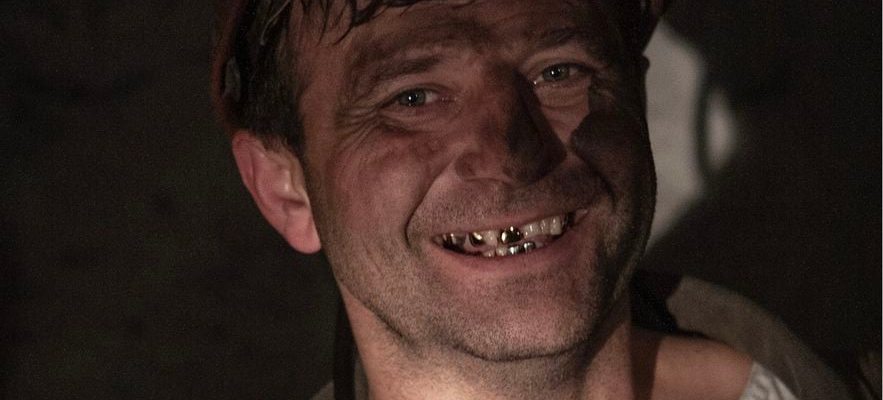In Donbass, which is home to the largest coal basin in Ukraine with 90% of the country’s coal reserves spread over 60,000 square kilometers, the town of Vouhledar, about fifty kilometers southwest of Donetsk, contains the mine of Pivdennodonbaska, exploited since 1964. It is here that Youry Bilak photographed the black faces of the site in 2005 and that he immortalized them again seven years later in their daily work. From these reports remain powerful images and as many unique human stories that the Lewarde Historical Mining Center, in Hauts-de-France, has chosen to relay. Until September 22, several dozen photos are on display to pay tribute to the courage of these underground workers in a territory with a long mining tradition, now scarred by war.
Youry Bilak, whose Ukrainian parents took refuge in France after the Second World War, was nurtured with the original family values as much as with photography, his father’s passion. In 2004, he set off to meet his ancestors, in the Carpathians, where the Houtsoules live, a minority from which his family comes, then in the coal mines, always with “the same angle of attack: the person, his experience , his culture”. Inspired by the Flemish naturalist painting of the 14th and 15th centuries, that of Rembrandt or Van Dyck, and by the chiaroscuro of Georges de La Tour in the 17th century, Bilak shares with them “a certain culture of light “, which he works in his studio but also during his tribulations in the field. Thus, underground, when, often, the only light source emanates from the charcoal burners’ headlamp, it becomes the vector of expression of an isolated figure.
Youry Bilak, “Portrait of Hennadiy, miner of Vouhledar”. Donbass mining basin, 2012.
/ © Youry Bilak
Hennadiy, with whom Youry Bilak has formed a strong bond, could alone embody the destiny of these shadow workers who fell, overnight, into horror. The fifty-year-old worked for a long time in the Pivdennodonbaska No. 1 mine, in Vouhledar, in 4/4 cycles (three days of work, one day of rest), six hours a day. He was still living with his wife, a teacher, in the small village of Mykilske, about ten kilometers away, when, on February 24, 2022, the first day of the war, Vouhledar was bombed. On March 12, Hennadiy’s house was pierced by shrapnel. On the 15th, Russian soldiers entered Mykilske. Vandalism, alerts, shootings… The daily life of the inhabitants turns into hell. From hunts to caches, Hennadiy and his family managed, after a long journey, to flee the combat zone and reach Lviv, in the west of the country. They now live in the Lviv-Volhynia mining basin, near Novovolynsk. Youry Bilak had already visited the site in 2006 to continue his report on the black faces, these “heroes who work, at the risk of their lives, in cavities less than 80 cm high”.
Beyond individual stories, Bilak’s photos have the merit of bringing mining news in Ukraine to light. A little-known reality in Europe. In this country, more than 150 mines extracted coal before the Russian invasion. And if their number has been reduced, men continue to go down there today, as they did fifty years ago in Lewarde.
.
